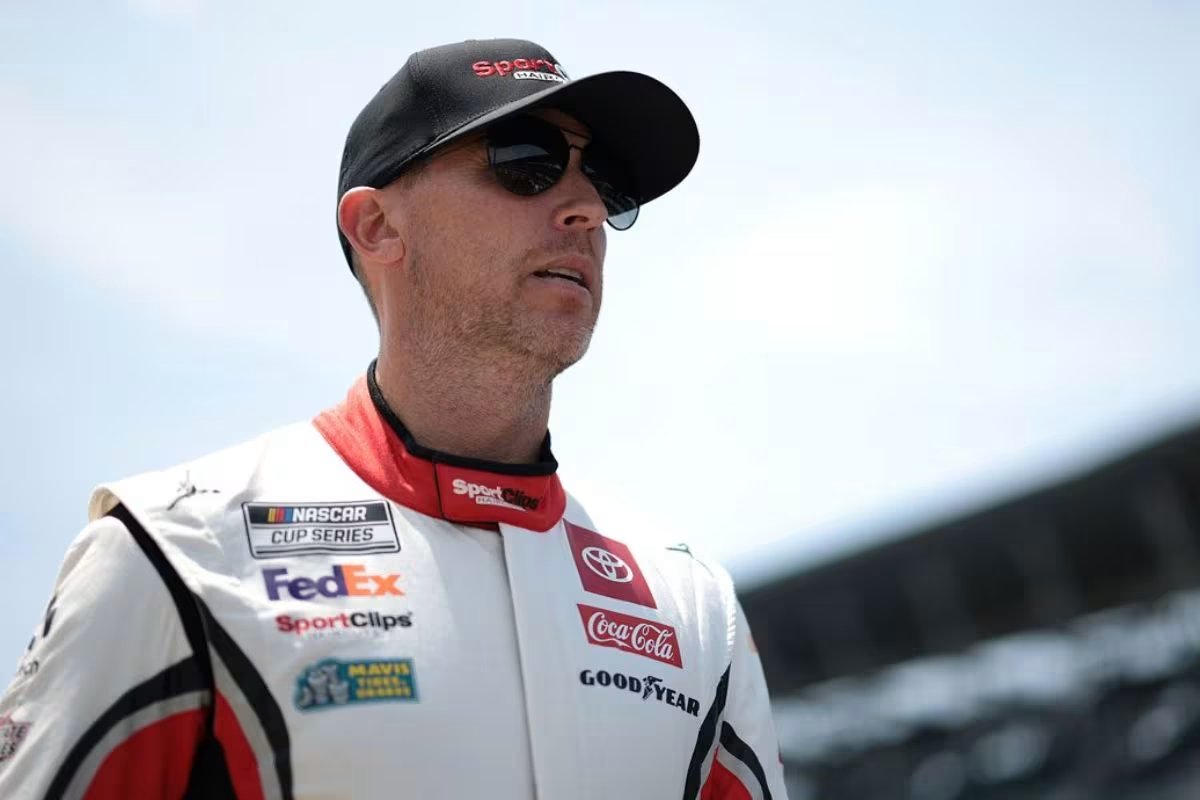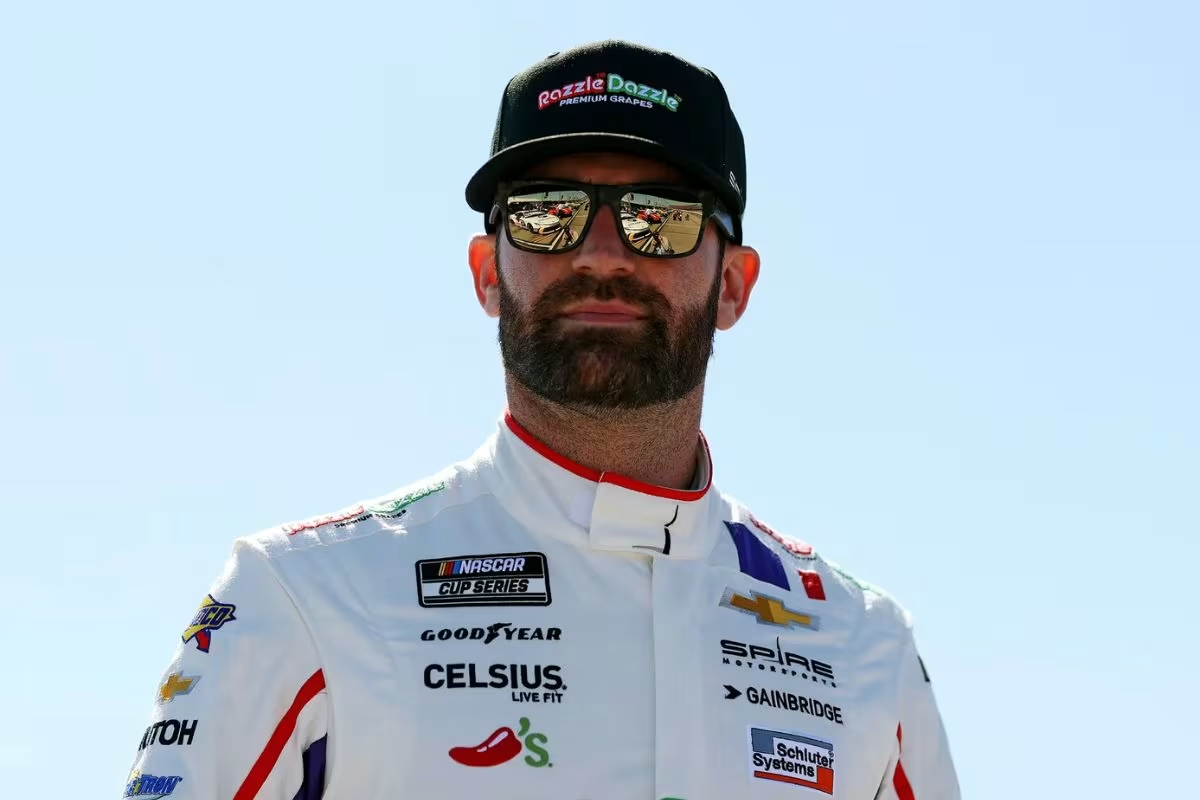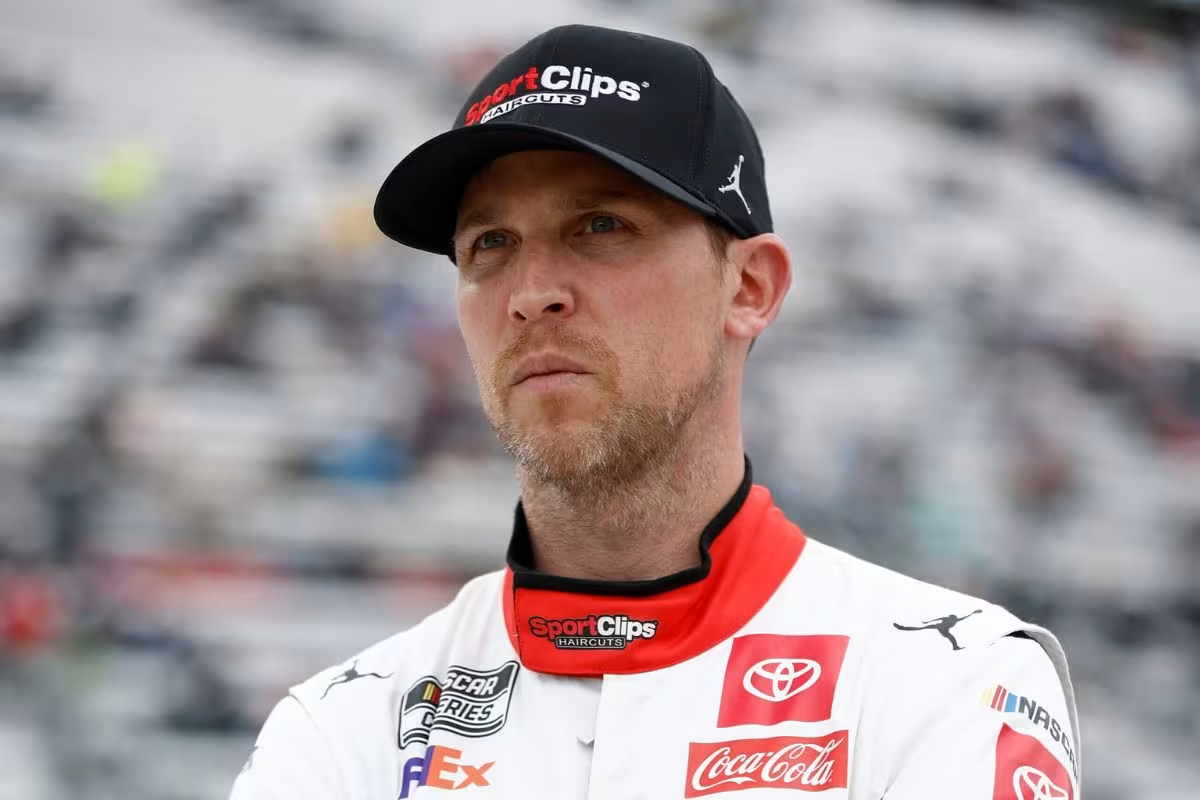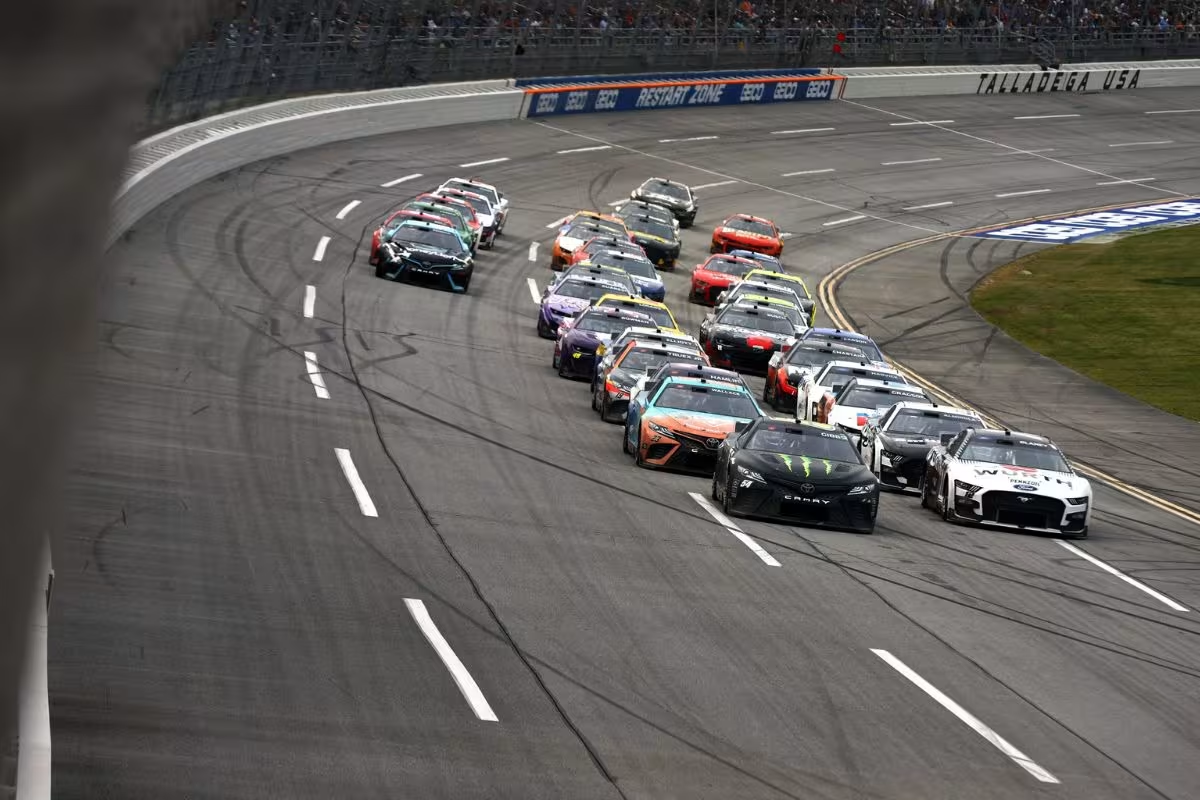Denny Hamlin Blasts NASCAR’s Latest Innovation: Denny Hamlin‘s recent critique of NASCAR’s decision to implement vehicle modifications for the Talladega racetrack raises critical questions about the balance between innovation and safety in motorsport. His concerns reflect a broader apprehension among drivers regarding how these changes could affect performance dynamics under the high-pressure conditions typical of Talladega. As teams adapt to the new rules, the potential for chaos both on and off the track becomes increasingly apparent. What remains to be seen is whether these modifications will improve the competitive landscape or exacerbate existing safety issues, prompting further scrutiny from all involved.
Key Highlights
- Denny Hamlin criticized NASCAR’s decision to abandon the sharkfin design, citing concerns for driver safety and performance during the upcoming Talladega race.
- The rejection of the sharkfin design raised questions about maintaining competitive racing dynamics while enhancing vehicle stability and safety.
- Modifications like the extended-height roof rail aim to improve aerodynamic stability, but their effectiveness will be closely monitored during the Talladega racetrack.
- Mixed reactions from drivers and teams indicate a divide on NASCAR’s approach to balancing safety enhancements with traditional racing strategies.
- Fans anticipate potential chaos at Talladega as new vehicle modifications may impact race dynamics and driver safety significantly.
Corey LaJoie’s Scary Flip at Michigan
Reflecting on Corey LaJoie’s harrowing flip during the Michigan race, the incident clearly highlights the inherent dangers of NASCAR racing. The sight of LaJoie’s car executing a barrel roll into the grass served as a striking reminder of the high-speed risks that drivers face each time they take to the track.
Fortunately, LaJoie emerged unscathed, emphasizing the effectiveness of current safety protocols; however, the event raises critical questions regarding the ongoing vulnerability of drivers in such extreme conditions.
The Michigan incident serves as a catalyst for discourse on NASCAR’s safety measures, especially with the looming Talladega Superspeedway race. While innovations like roof flaps have been introduced to mitigate flipping, they are not infallible.
As NASCAR officials respond to the alarming visuals from Michigan, the sport’s commitment to enhancing driver safety is paramount. The introduction of supplementary safety measures, including the Sharkfin spoiler, highlights this proactive approach.
This innovation aims to improve vehicle stability and minimize the likelihood of flips, particularly on high-banked tracks where speeds can escalate rapidly.
NASCAR’s Sharkfin Innovation
The aftermath of Corey LaJoie’s frightening flip at Michigan has intensified discussions about safety innovations in NASCAR, particularly in anticipation of the Talladega Superspeedway race. In response to the alarming incident, NASCAR convened a meeting with drivers to investigate potential modifications aimed at improving vehicle stability and safety. One notable proposal was the introduction of a vertical ‘sharkfin-looking’ spoiler to be affixed to the roofs of the cars. This design aimed to enhance aerodynamic stability, particularly for Talladega, a NASCAR racetrack.
However, feedback from drivers, including prominent voices like Denny Hamlin, led to the subsequent rejection of the sharkfin design. The concerns raised highlight the complexities involved in implementing safety measures without compromising the competitive nature of the sport.
This incident and the ensuing discussions emphasize the delicate balance NASCAR must navigate between safety innovation and maintaining the sport’s exhilarating character. The future of vehicle design in NASCAR remains an important topic, particularly as safety concerns continue to mount.
Denny Hamlin’s Take on the Sharkfin Design
Denny Hamlin voiced strong concerns regarding the proposed sharkfin design intended for NASCAR vehicles, emphasizing both aesthetic and functional drawbacks. During a recent episode of his podcast, “Actions Detrimental,” Hamlin articulated the widespread discontent among drivers regarding the inclusion of the roof rail over the front windshield, which many perceived as an unsightly alteration that detracted from the car’s general appearance.
NASCAR won’t use front windshield air deflector that it considered for Talladega to reduce chance of cars getting airborne. Will add fabric on right side of hinge of roof flap to block air, rocker side skirt, right side roof rail extends two inches. pic.twitter.com/9wl7vlL2ZG
— Bob Pockrass (@bobpockrass) October 1, 2024
He remarked frankly, “For one, it looks like ass,” highlighting the visual displeasure that the design evoked within the racing community.
“This was just fantasyland of ‘here’s what I would do if I were to fix it,’ just because it was a big topic I saw on social media last week.”
“This weekend we got briefed from NASCAR on changes that they’re proposing for Talladega, which include running that roof rail over our front windshield. And obviously, the drivers were not in favor of that. For one, it looks like ass. And second, you know, it hurts visibility.” – Hamlin
Moreover, Hamlin highlighted a critical functional issue: the potential adverse impact on driver visibility. By obstructing the front windshield, the sharkfin could impede a driver’s ability to navigate the track effectively, particularly in high-stakes environments such as Talladega, where split-second decisions are paramount.
His assertion that the discussions were akin to a “fantasyland” reinforces the notion that the proposals may not be grounded in practical racing considerations. Instead, they seem to stem from an attempt to address social media sentiments rather than the real-world implications for drivers.
Concerns About the Sharkfin and Tear-Offs
Amid the ongoing debate surrounding the sharkfin design, concerns about the implications for tear-offs have surfaced prominently among drivers. Denny Hamlin, a prominent voice in the discussion, has highlighted a significant issue regarding the visibility challenges posed by the proposed design changes. According to Hamlin, the placement and mechanics of tear-offs, fundamental for maintaining clear visibility during races, could be adversely affected by the introduction of the sharkfin.
“But the problem is that, you know, we take tear-offs off our front windshield, and superspeedways are some of the worst tracks for debris on the front windshield. So we need to get those tear-offs off.” – Hamlin
Superspeedways are notorious for debris accumulation on windshields, making the ability to swiftly remove tear-offs indispensable for driver safety and performance. Hamlin argues that the proposed sharkfin design would occupy valuable space on the windshield, thereby limiting the effectiveness of tear-offs. This could lead to increased difficulty for drivers in managing visibility during critical race moments, particularly in the chaotic environment typical of Talladega and similar tracks.
The potential for diminished visibility raises alarms not only about competitive integrity but also about the safety of the drivers. In an environment where split-second decisions can dictate outcomes, clear sightlines are paramount. The integration of the sharkfin, if it compromises the functionality of tear-offs, may inadvertently escalate risks rather than mitigate them.
More Fins Ahead of Talladega
NASCAR’s recent decision to abandon the sharkfin concept indicates a broader commitment to improving driver safety, particularly in the context of the upcoming Talladega race. This crucial change marks a meaningful step in NASCAR’s ongoing efforts to prevent cars from becoming airborne during high-speed events, a concern that has plagued the sport for decades.
In lieu of the sharkfin, NASCAR is implementing a series of modifications designed to stabilize the NextGen vehicles. The introduction of an extended-height roof rail—crafted from 2-inch polycarbonate—functions akin to a miniature wing, enabling airflow management that can mitigate lift during turbulent conditions. This innovation is complemented by the incorporation of parachute-like fabric beneath the right-side roof flap, which further assists in maintaining ground contact by triggering the flaps to deploy effectively.
Moreover, the aluminum extension of the rocker panel skirt is a notable aerodynamic improvement. By closing the gap between the car and the track, this modification aims to reduce lift and improve downforce, critical factors in maintaining vehicle stability at the Superspeedway.
Collectively, these adjustments reflect NASCAR’s proactive stance towards driver safety. While the abandonment of the sharkfin has elicited mixed reactions, the alternative solutions proposed may serve as a robust framework to improve safety without compromising the competitive spirit of racing.
News in Brief: Denny Hamlin Blasts NASCAR’s Latest Innovation
Denny Hamlin’s criticism of NASCAR’s recent vehicle modifications highlights the tension between innovation and safety within the sport. The implementation of new design elements, such as the sharkfin, raises considerable concerns regarding driver safety and competitive integrity. As the Talladega racing event approaches, the potential for chaos increases, prompting scrutiny from both drivers and fans similarly. This situation exemplifies the delicate balance NASCAR must maintain between enhancing performance and ensuring the well-being of its competitors.
ALSO READ: Denny Hamlin Demands Chase Elliott’s Suspension for Unacceptable Behavior




